ULTIMATE Ishiuchi Miyako Follow 絶唱 、横須賀ストーリー Yokosuka Story 1976-1977 22 unique gelatin silver prints, printed 1979. Each sheet: 11.9 x 16.3 cm (4 5/8 x 6 3/8 in.) Each frame: 22 x 26 cm (8 5/8 x 10 1/4 in.) Each signed in rōmaji and dated in ink on the verso. This work is unique. These 22 prints were part of nearly 100 unique cabinet-card-sized prints of Yokosuka Storymade by Ishiuchi in 1979 for a Nikon Salon exhibition in Paris that never materialised. Acquired by the present owner in 2010 – when these prints were first made available – they represent the largest holding of this work in private hands. London’s Tate Modern acquired 40 prints in 2013 and the others are held privately and by the artist. This is the first auction offering of early prints from Yokosuka Story . Please note that the artist’s name appears in Japanese order with her surname before her forename.
Provenance The Third Gallery Aya, Osaka Private Collection, Japan Exhibited 絶唱、横須賀ストーリー Yokosuka Story , Nikon Salon in Ginza, Tokyo, 26 April - 1 May, 1977, other prints From Yokosuka , 2nd New Yokosuka cabaret, Yokosuka, 29 April - 17 May 1981, other prints DuMont Foto 5: Die Japanische Photographie , Museum für Kunst und Gewerbe, Hamburg, 1984, other prints Ishiuchi Miyako: Postwar Shadows , Getty, Los Angeles, 6 October 2015 - 21 February 2016, other prints Literature Ishiuchi, 絶唱、横須賀ストーリー Yokosuka Story , Tokyo: Shashin Tsushinsha, 1979, pp. 10, 21, 24, 35, 41-42, 51, 56, 58, 83, variant crops Ishiuchi, Sweet Home Yokosuka 1976-1980 , New York: PPP Editions, 2010, n.p., variant crops Ishiuchi Miyako: Postwar Shadows , Los Angeles: Getty, 2015, pl. 2, p. 34; pl. 11, p. 43, variant crops Ishiuchi Miyako: Grain & Image , Yokohama: Yokohama Museum of Art, 2017, pp. 228-229, variant crops Catalogue Essay 'They are such small photographs, but each one is evidence that I have lived my life.’ Ishiuchi Miyako on this work ‘Yokosuka was like a deeply haunting feeling of brutality, and onto hundreds of pure white photographic paper, I spewed it out in deep blacks.’ Ishiuchi Miyako in Yokosuka Story , 1979 In the autumn of 1976, Ishiuchi Miyako, a 29-year-old self-taught photographer, journeyed to her hometown of Yokosuka to photograph the port city where she had lived from the age of 6 until 19. Her 13 years in Yokosuka – the site of the largest U.S. naval base overseas – were tainted by grim memories of World War II and tensions caused by a dominant U.S. presence. It was her lingering loathing of Yokosuka that led her to choose it as the subject of her first major project and photography was her tool of self-expression with which she purged her unwanted feelings and dark memories of her hometown. Her debut Yokosuka Story was born of this act of expelling her inner turmoil. ‘I am photographing the city of Yokosuka, but actually, I am not photographing the city of Yokosuka.’ Ishiuchi Miyako In Yokosuka Story , Ishiuchi presents a fictional Yokosuka rendered in black and white. Dark, grainy and off-kilter, her photographs are quietly unsettling. Juxtapositions of close-up and faraway views, straight and oblique angles, derelict buildings and solitary figures reflect the tensions she felt growing up in the turbulent base town. On completing her project in March of 1977, Ishiuchi showed 100 Yokosuka photographs to Nobuyoshi Araki whose introduction to Jun Miki, photographer and director of Nikon Salon, resulted in her maiden solo show 絶唱、横須賀ストーリー Yokosuka Story from 26 April to 1 May at Nikon Salon in Ginza, Tokyo. In 1978, Ishiuchi created the publishing company Shashin Tsūshinsha, financed with the three million yen her father had saved for her wedding, to self-publish her first two photobooks, which included Yokosuka Story . The following year, 1979, was historically significant for Ishiuchi who became the first woman to receive the Kimura Ihei Award, the most coveted photography award in Japan, and the only woman artist to be included in the group exhibition Japan: A Self-Portrait at the International Center of Photography in New York, which marked the first presentation of her work abroad. This was also the same year in which she created the present work as part of nearly 100 unique cabinet-card-sized prints of Yokosuka Story for a Nikon Salon exhibition in Paris that never took place. Thin black borders frame each small photograph, and together, the 22 images can be read as a narrative – Ishiuchi’s own Yokosuka Story – woven with memories, experiences and histories. ‘I loved the darkroom. I took photographs so that I can be in the darkroom.’ Ishiuchi Miyako For Ishiuchi, the tactile process of creating a photograph, an object, in the darkroom was highly personal and more important than the act of taking an image with a camera. Influenced by her university education in weaving and textile dyeing, she focused on manipulating chemic
ULTIMATE Ishiuchi Miyako Follow 絶唱 、横須賀ストーリー Yokosuka Story 1976-1977 22 unique gelatin silver prints, printed 1979. Each sheet: 11.9 x 16.3 cm (4 5/8 x 6 3/8 in.) Each frame: 22 x 26 cm (8 5/8 x 10 1/4 in.) Each signed in rōmaji and dated in ink on the verso. This work is unique. These 22 prints were part of nearly 100 unique cabinet-card-sized prints of Yokosuka Storymade by Ishiuchi in 1979 for a Nikon Salon exhibition in Paris that never materialised. Acquired by the present owner in 2010 – when these prints were first made available – they represent the largest holding of this work in private hands. London’s Tate Modern acquired 40 prints in 2013 and the others are held privately and by the artist. This is the first auction offering of early prints from Yokosuka Story . Please note that the artist’s name appears in Japanese order with her surname before her forename.
Provenance The Third Gallery Aya, Osaka Private Collection, Japan Exhibited 絶唱、横須賀ストーリー Yokosuka Story , Nikon Salon in Ginza, Tokyo, 26 April - 1 May, 1977, other prints From Yokosuka , 2nd New Yokosuka cabaret, Yokosuka, 29 April - 17 May 1981, other prints DuMont Foto 5: Die Japanische Photographie , Museum für Kunst und Gewerbe, Hamburg, 1984, other prints Ishiuchi Miyako: Postwar Shadows , Getty, Los Angeles, 6 October 2015 - 21 February 2016, other prints Literature Ishiuchi, 絶唱、横須賀ストーリー Yokosuka Story , Tokyo: Shashin Tsushinsha, 1979, pp. 10, 21, 24, 35, 41-42, 51, 56, 58, 83, variant crops Ishiuchi, Sweet Home Yokosuka 1976-1980 , New York: PPP Editions, 2010, n.p., variant crops Ishiuchi Miyako: Postwar Shadows , Los Angeles: Getty, 2015, pl. 2, p. 34; pl. 11, p. 43, variant crops Ishiuchi Miyako: Grain & Image , Yokohama: Yokohama Museum of Art, 2017, pp. 228-229, variant crops Catalogue Essay 'They are such small photographs, but each one is evidence that I have lived my life.’ Ishiuchi Miyako on this work ‘Yokosuka was like a deeply haunting feeling of brutality, and onto hundreds of pure white photographic paper, I spewed it out in deep blacks.’ Ishiuchi Miyako in Yokosuka Story , 1979 In the autumn of 1976, Ishiuchi Miyako, a 29-year-old self-taught photographer, journeyed to her hometown of Yokosuka to photograph the port city where she had lived from the age of 6 until 19. Her 13 years in Yokosuka – the site of the largest U.S. naval base overseas – were tainted by grim memories of World War II and tensions caused by a dominant U.S. presence. It was her lingering loathing of Yokosuka that led her to choose it as the subject of her first major project and photography was her tool of self-expression with which she purged her unwanted feelings and dark memories of her hometown. Her debut Yokosuka Story was born of this act of expelling her inner turmoil. ‘I am photographing the city of Yokosuka, but actually, I am not photographing the city of Yokosuka.’ Ishiuchi Miyako In Yokosuka Story , Ishiuchi presents a fictional Yokosuka rendered in black and white. Dark, grainy and off-kilter, her photographs are quietly unsettling. Juxtapositions of close-up and faraway views, straight and oblique angles, derelict buildings and solitary figures reflect the tensions she felt growing up in the turbulent base town. On completing her project in March of 1977, Ishiuchi showed 100 Yokosuka photographs to Nobuyoshi Araki whose introduction to Jun Miki, photographer and director of Nikon Salon, resulted in her maiden solo show 絶唱、横須賀ストーリー Yokosuka Story from 26 April to 1 May at Nikon Salon in Ginza, Tokyo. In 1978, Ishiuchi created the publishing company Shashin Tsūshinsha, financed with the three million yen her father had saved for her wedding, to self-publish her first two photobooks, which included Yokosuka Story . The following year, 1979, was historically significant for Ishiuchi who became the first woman to receive the Kimura Ihei Award, the most coveted photography award in Japan, and the only woman artist to be included in the group exhibition Japan: A Self-Portrait at the International Center of Photography in New York, which marked the first presentation of her work abroad. This was also the same year in which she created the present work as part of nearly 100 unique cabinet-card-sized prints of Yokosuka Story for a Nikon Salon exhibition in Paris that never took place. Thin black borders frame each small photograph, and together, the 22 images can be read as a narrative – Ishiuchi’s own Yokosuka Story – woven with memories, experiences and histories. ‘I loved the darkroom. I took photographs so that I can be in the darkroom.’ Ishiuchi Miyako For Ishiuchi, the tactile process of creating a photograph, an object, in the darkroom was highly personal and more important than the act of taking an image with a camera. Influenced by her university education in weaving and textile dyeing, she focused on manipulating chemic



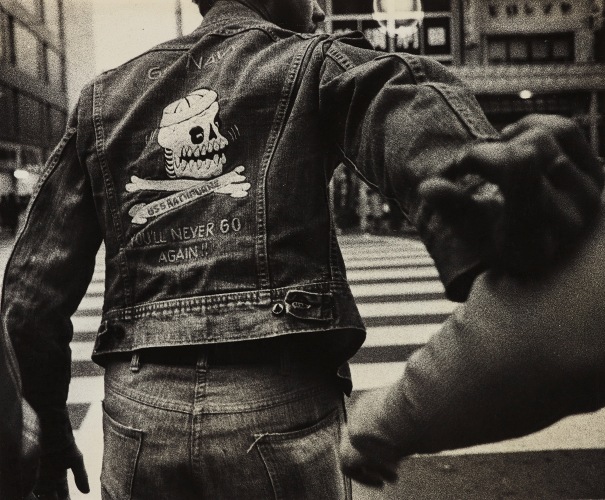
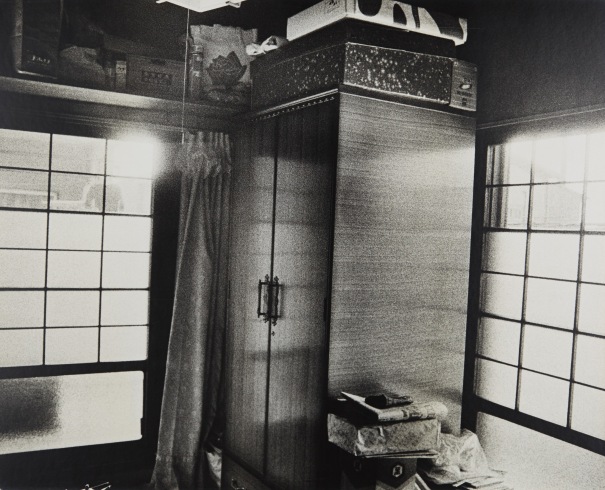
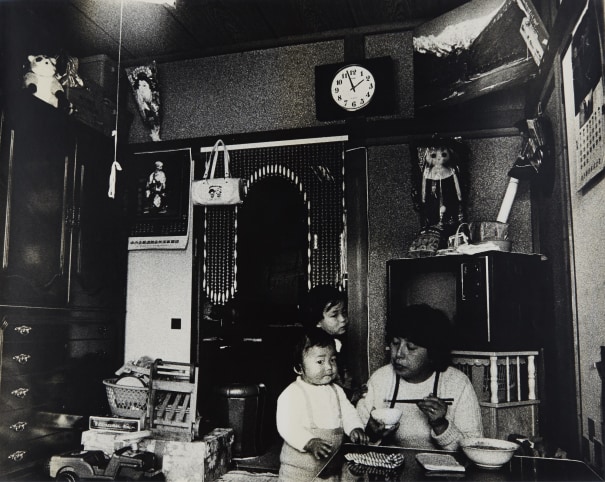
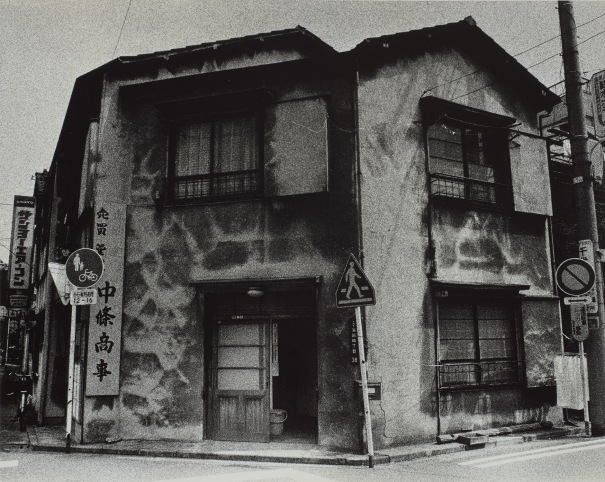






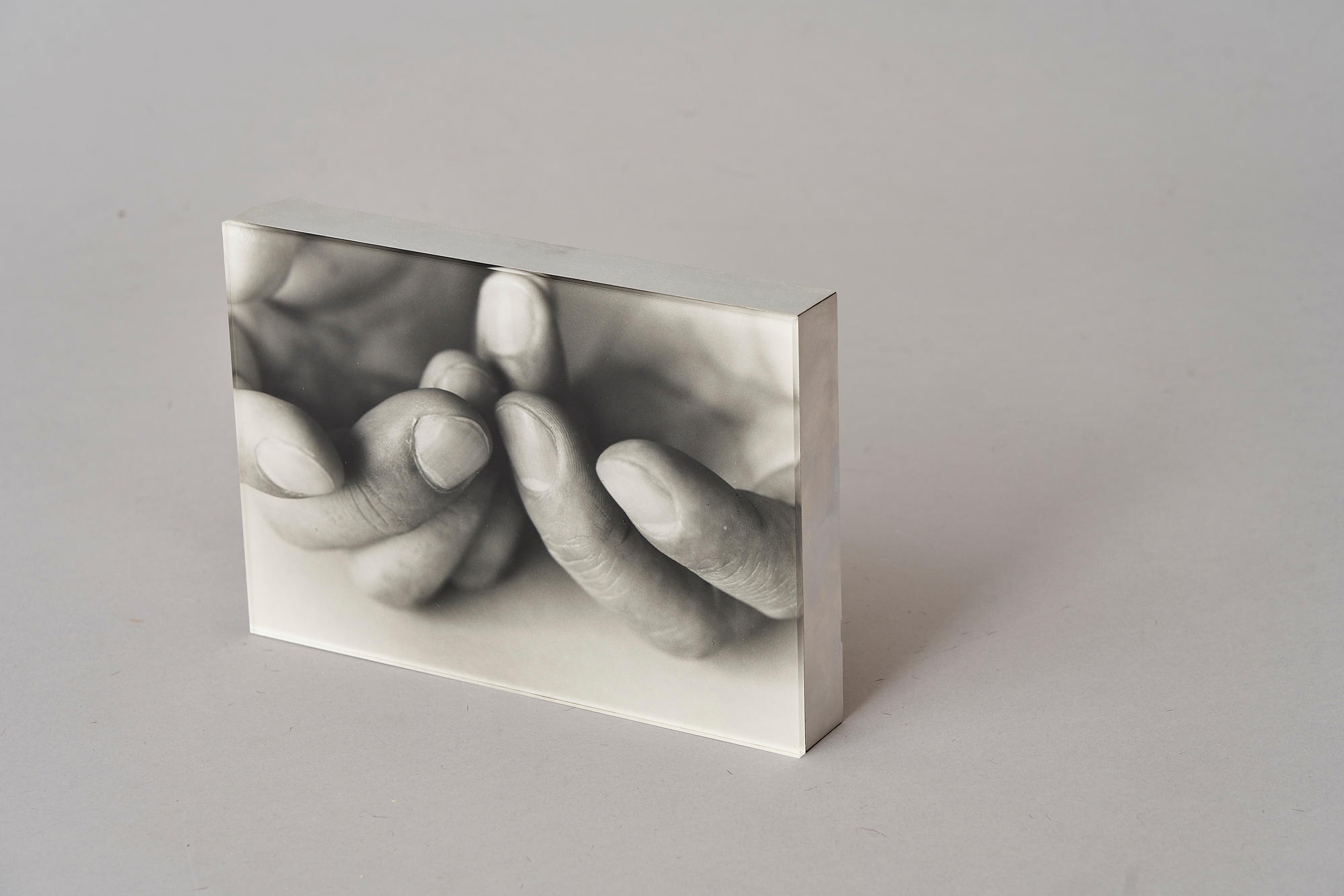
Testen Sie LotSearch und seine Premium-Features 7 Tage - ohne Kosten!
Lassen Sie sich automatisch über neue Objekte in kommenden Auktionen benachrichtigen.
Suchauftrag anlegen